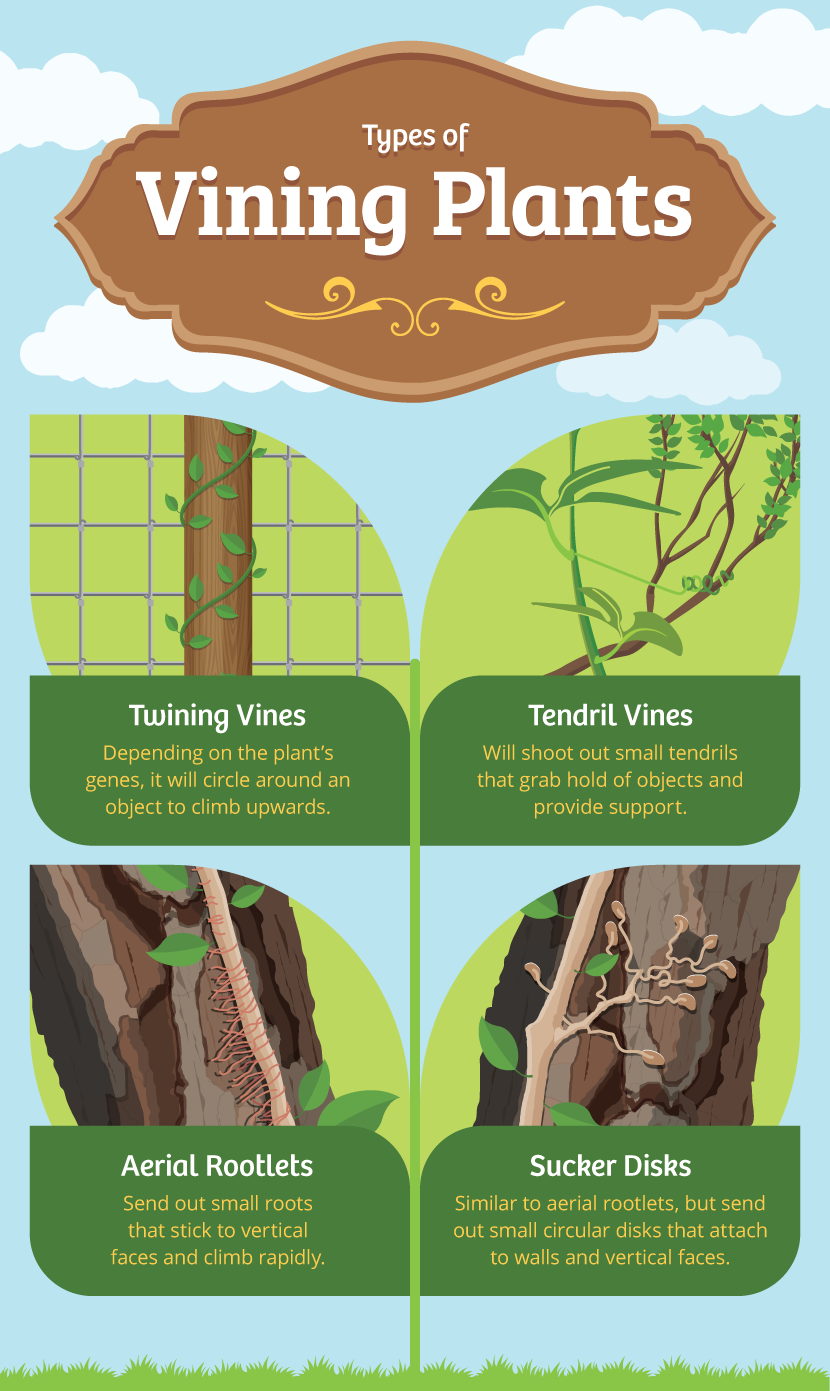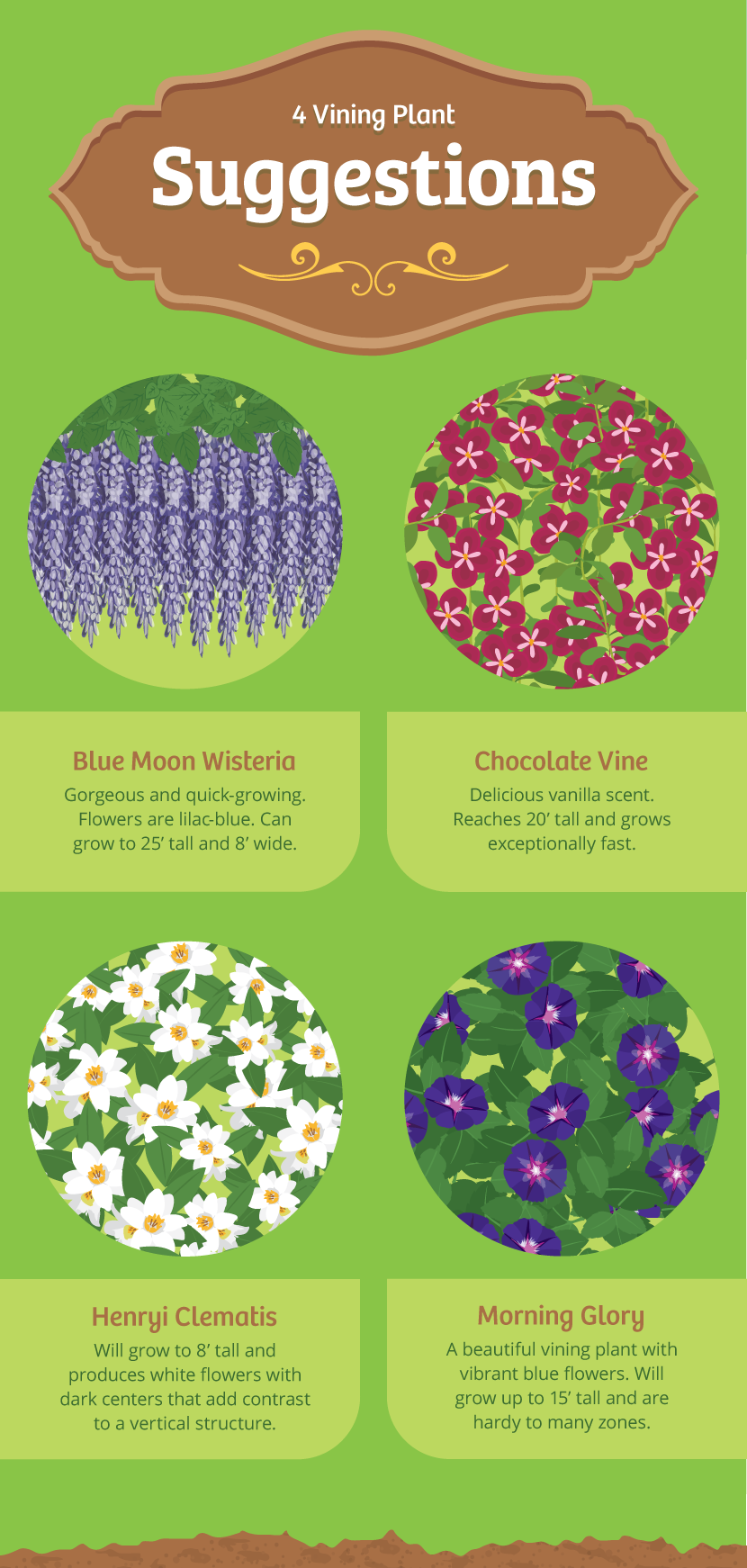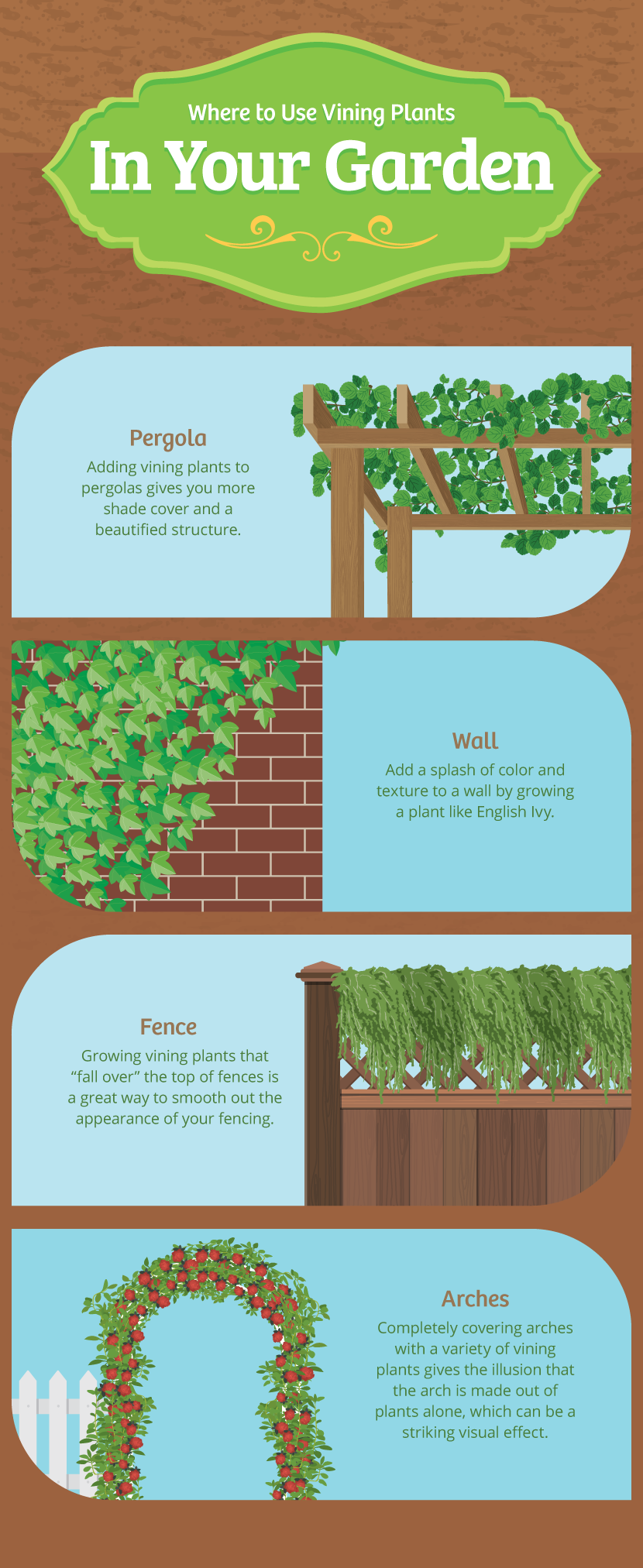A Simple Guide to Gardening With Vines
Blue Moon Wisteria, Morning Glory, and More!
As spring approaches, gardeners around the world are itching to get out into the soil and start growing again.
In their haste, they often forget about one of the most interesting types of plants they can grow: vining plants!
Most gardeners have little experience with vining plants, and for good reason: they can be confusing when you first look into them.
Thankfully, they’re not that complicated. Once you know how they grow and how to incorporate them, using vining plants in your garden and landscaping is simple.

Due to the wonderful biodiversity of plants, there are four major ways that vining plants climb up surfaces.
Twining Vines
Vines that climb by twining are the simplest to take care of.
All they require is a lot of support, as they can stress fragile structures that they climb up.
These vines climb by encircling the vertical support. The specific way that they encircle is dependent on that particular plant’s genetics,
but the basic idea is simple: twining vines send out shoots that flail about until they hit something to latch onto.
Tendril Vines
Tendril vines are the second major class of climbers, operating by sending out very thin tendrils that will whip back and forth until they find something to attach to.
The thin hairs on the tendril respond to touch and when activated will cause the tendril to cling to the support,
providing the stability for the vine to continue growing upward. Grapes are the most recognizable tendril vining plant.
Aerial Rootlets
Some of the most popular vining plants, like English ivy, climb by producing what are known as aerial rootlets.
That’s just a fancy word for small, hairy, and adhesive roots that run along the bottom surface of the vine.
These stick to vertical faces and provide the support needed for the vine to continue its vertical climb.
Sucker Disks
Sucker disks are a hybrid of aerial rootlets and tendril vines.
These plants send out tendrils that have little disk-shaped suckers at the end.
The suckers attach to supports and provide enough tension for the rest of the vine to keep on growing.
No matter which method a vining plant uses to climb, they all have one thing in common: they grow fast and they are relatively flimsy.
This is because they rely so heavily on the support structure they’re growing on to provide the structural integrity that most other plants have innately.

While there are countless vining plants to consider in a garden, here are four good choices for beginner vine gardeners.
Blue Moon Wisteria
Despite the name, Blue Moon Wisteria comes in various colors. This is a large and fast-growing plant,
reaching up to 25’ tall and 8’ wide. Be sure to have ample space for it if you do decide to add it to your garden.
You’ll start to see flowers after the 3rd year of growth, provided you give it the full sun that it requires to produce optimally.
It needs slightly acidic soil that is well draining, like most vining plants.
If you do decide to grow Blue Moon Wisteria, place it next to a pergola; it’s a great location due to how much it likes to climb and spread.
Morning Glory
Even non-gardeners are familiar with this vining plant, yet most gardeners haven’t used it in their gardens.
They have exceptionally beautiful flowers that come in a range of colors – red, yellow, blue, and even purple.
The vines can climb to over 10’ tall and do very well in most growing conditions,
making them a favorable vining plant for people who are new to growing.
Henryi Clematis
This is a classic vining plant that has flowers shaped like daisies.
Use these on pergolas or fences, as they love to fall over the top of a structure, and look amazing doing so.
They will reach around 6-7’ tall at maximum height and their flowers have a dark center and tan or cream exterior.
Chocolate Vine
Chocolate vine is a fantastic example of a classic twining vine.
It grows exceptionally fast and produces interestingly shaped flowers that dangle on the vine instead of growing upwards.
The flowers are a deep purple in color and have a very interesting and zesty smell compared to most flowers.
The purple flowers strike a nice contrast to the aqua and light green leaves of the rest of the plant.

Now that we understand how plants vine and have a few good varieties under our belt,
let’s look at how to incorporate vining plants into our gardens and landscaping.
The general rule here is simple: plant them next to structures that they can climb.
Pergolas
Pergolas are fantastic choices for vining plants, as they’re usually over 10’ tall –
which is more than enough room for most species of vining plants to grow. For extra points,
allow plants to climb up and over the pergola, providing shade cover and a nice contrast to the open sky above.
Walls
To get vining plants working well with walls, choose plants that use aerial rootlets or sucker disks to attach themselves to a structure.
Twining vines or tendril vines will have a hard time attaching to anything unless there is an incredible amount of texture on the wall. English ivy is a popular choice for many home landscapers.
Fences
Fencing can look a bit drab, especially if you have a lot of it surrounding your property.
Picking up a few types of vining plants and planting them next to your fencing will give the appearance of a living wall.
Bonus points if you mix varieties together for different splashes of color.
Arches
While arches aren’t the most common backyard accessory, if you do have one you should consider completely covering it with vining plants.
This will give the illusion that the arch is made entirely out of plants, and it will burst with color. Choose a plant that can grow from one side of the arch to the other.
Now that you’re equipped with the knowledge of how vining plants grow, the best types to start with,
and where to locate them in your garden, you have no excuse not to mix some vining plants into your spring gardening season.
Embed the article on your site

